 Last year at the launch of the 10 dinar, the the vice-gouverneur of the Central Bank of Tunisia, mr. Mohamed Rekik, made a comment that the Central Bank would issue a new banknote of 5 dinar in the first quarter of 2014. Today, 17 March 2014, they have indeed issued the new banknote.
Last year at the launch of the 10 dinar, the the vice-gouverneur of the Central Bank of Tunisia, mr. Mohamed Rekik, made a comment that the Central Bank would issue a new banknote of 5 dinar in the first quarter of 2014. Today, 17 March 2014, they have indeed issued the new banknote.
The image below can be found on several newssites. I haven't been able to find a clean one without the numbers on it unfortunately. The dimensions of the new note are 143 mm x 73 mm and the dominant colour is green. The portrait on the front is of the legendary Hannibal. The issue date on the note is "03/20/2013".
Update 4-4-2014: better pictures.
 What was already expected, has now been confirmed: the Bank of England has signed a contract with polymer producer Innovia to produce the sheets of plastic needed for the new polymer banknotes.
What was already expected, has now been confirmed: the Bank of England has signed a contract with polymer producer Innovia to produce the sheets of plastic needed for the new polymer banknotes.
Innovia, whose polymers are used for bank notes by more than 20 countries, will establish a plant in Wigton in northwest England to produce the materials. The Bank said notes will continue to be printed at its works in Debden in southeast England, which is run by De La Rue. Innovia Security is an Australian division of UK-based Innovia Group.
The new notes will be smaller (by around 15%). The first polymer note to be printed and issued will be the £5 note with the image of Sir Winston Churchill. This note will enter circulation in 2016, shortly followed by the £10 note with the image of Jane Austen.
 Just recently the Reserve Bank of India (RBI) announced that all pre-2005 banknotes would be withdrawn from 31 March 2015. Now the Bank has announced that it will extended the deadline for exchanging those banknotes to 1 January 2015.
Just recently the Reserve Bank of India (RBI) announced that all pre-2005 banknotes would be withdrawn from 31 March 2015. Now the Bank has announced that it will extended the deadline for exchanging those banknotes to 1 January 2015.
The RBI said the rationale behind its move to withdraw banknotes printed prior to 2005 is to remove them from the market because they have fewer security features compared to banknotes printed after 2005.
 Israel is preparing for the introduction of the first two banknotes of the new series: the 50 and 200 NIS (new Israeli shekel). The new series was presented in April 2013 and the first two notes were scheduled for the end of last year. In August however the Bank of Israel made clear that their would be a delay of several months before the first note would be issued.
Israel is preparing for the introduction of the first two banknotes of the new series: the 50 and 200 NIS (new Israeli shekel). The new series was presented in April 2013 and the first two notes were scheduled for the end of last year. In August however the Bank of Israel made clear that their would be a delay of several months before the first note would be issued.
This week the Bank of Israel issued a press release with the final design of the new 50 NIS note. This was done to aid manufacturers, suppliers, and operators of vending, counting and sorting machines, in order to calibrate them to accept the new banknote. There are some small changes from the original concept like added security elements and some added imagery. More details can be found in the press release.
Banknotenews.com reports that Guatemala has just issued a new version of their 20 quetzal note. This note is still printed by the Canadian Bank Note Company but this will soon change. The Russian printer Goznak has relased an interview with Arkady Trachuk, General Director of Goznak. In this interview he indicates that Guatemala has signed a deal with Goznak to print the future 20 quetzal note.
In the same interview he indicates that a number of other countries are also clients of Goznak, like Lebanon, Yemen, Angola, Nigeria, Indonesia, Laos, Cambodia, and Vietnam to a smaller extent. One interesting thing he mentions is that Vietnam has shifted to plastic banknotes but is now in the process of coming back to the paper substrate (by Goznak).
 The Pan European High Security Printing™ Conference is an annual event that focuses on government-specified and issued documents. These include currency, fiduciary documents, excise stamps, ID cards, e-passports, visas, vehicle documents and licences, with a particular emphasis on banknotes and the emerging technologies for ID and travel documents.
The Pan European High Security Printing™ Conference is an annual event that focuses on government-specified and issued documents. These include currency, fiduciary documents, excise stamps, ID cards, e-passports, visas, vehicle documents and licences, with a particular emphasis on banknotes and the emerging technologies for ID and travel documents.
This year the conference was held in Milan, Italy and several awards were handed out. The Regional Banknote of the Year Award 2014 went to the Central Bank of Russia for its new 100 Rubles banknote commemorating the 2014 Winter Olympic Games in Sochi.
"The regional Banknote of the Year Award recognises outstanding achievement in the design, technical sophistication and security of a banknote or banknote series, the key judging criteria being that successful banknotes should combine visual artistry and high levels of technical and security sophistication, with considerable emphasis placed on reflecting the cultural heritage of the issuing country in the note, and the relevance of the overall design and symbolism to the issuing country.
The Russian Sochi banknote is the first ever issued to mark the Winter Olympic Games – and its eye-catching design is the result of collaborative work between Goznak and the Central Bank’s team. It is the first time that the Bank has used a vertically-orientated design, chosen to emphasise the uniqueness of the Sochi region, which combines the proximity of mountains and warm sea. A total of 20 million pieces have been put into circulation.
The design of the new note reflects both the character of the host city and the nature of the event with a flying snowboarder on the front and the Olympic Stadium on the back set against a patchwork motif background featuring various winter sports. The note also incorporates several security features previously unseen on Russian banknotes, including a holographic patch and a 15mm wide polymer thread which changes image depending on the viewing angle. The award was received by Alexey Salunin of Goznak."
Meanwhile you can also vote for the IBNS Banknote of the Year if you're a member of the IBNS. I nominated the 100 ruble note for this competition but feel free to vote for your personal favorite.
 The BBC reports that the governor of the Central Bank of Nigeria has been ousted. Lamido Sanusi has been suspended by the president for "financial recklessness and misconduct". Mr Sanusi was widely respected after undertaking reforms to the banking sector since his appointment in 2009. He was named central bank governor of the year for 2010 by Banker magazine.
The BBC reports that the governor of the Central Bank of Nigeria has been ousted. Lamido Sanusi has been suspended by the president for "financial recklessness and misconduct". Mr Sanusi was widely respected after undertaking reforms to the banking sector since his appointment in 2009. He was named central bank governor of the year for 2010 by Banker magazine.
This probably means that future banknotes from Nigeria will have a new signature. Sanusi's signature can be seen on this 50 naira note from 2011:
The BBC reports: "An extremist group operating in Iraq and Syria seems to have made a banknote bearing the image of Osama Bin Laden, in an apparent effort to declare sovereignty over areas in their control. The note claims to be worth "one Islamic hundred pounds" and says in both English and Arabic it is from the Islamic State in Iraq, the Kurdpress news agency reports. But one expert talking to the Kuwaiti Al-Ra'y website said he was already suspicious about why the currency had been issued in pounds instead of Iraqi dinars, and added he did not think al-Qaeda would print English on its currency.
Meanwhile, Shafaq News in Baghdad points out the extremist group emerging in Iraq's western Anbar province is usually known by a different name - The Islamic State of Iraq and the Levant (ISIS). The banknotes have not convinced pro-militant groups either. One group says in a Facebook post that the bills are a hoax meant to discredit the ISIS. "Look closely you'll see it's Photoshop," the group said, accusing local Sunni militias of "playing tricks". We've also noticed the Bin Laden banknote has the same serial number - A001088 - as the Palestinian 100-pound note featured on Wikipedia."
The note in question:
The Palestinian note it resembles from Wikipedia:
 The Guardian reports about the residents of Rio who fight inflation.
The Guardian reports about the residents of Rio who fight inflation.
Fed up with high inflation and rip-off prices ahead of this year's World Cup and the Olympics in 2016, they have set up a Facebook page called "Rio $urreal – Don't Pay" dedicated to "exposing and boycotting the extortionate prices being charged by bars, restaurants and shops.
The $urreal itself is a mock banknote – Brazil's currency is the real – emblazoned with the face of Spanish surrealist artist Salvador Dalí. O Globo, Rio's biggest-selling daily newspaper, joked that the city needed its own currency, and some media-savvy Cariocas decided to create one, with Dalí's face on the front in place of the usual Brazilian national heroes.
 The central bank of Morocco, Bank Al-Maghrib, has denied the issuing of a 1000 dirham note. Lemag.ma reports that those rumours were spread on social media along with pictures of the alleged new note (seen below). It seems to be a photoshopped version of the new 100 dirham note.
The central bank of Morocco, Bank Al-Maghrib, has denied the issuing of a 1000 dirham note. Lemag.ma reports that those rumours were spread on social media along with pictures of the alleged new note (seen below). It seems to be a photoshopped version of the new 100 dirham note.
A new family of notes has been introduced in Morocco since August 2013. The highest denomination at this moment is the 200 dirham note.
The 100 dirham note which seems to be the source for the fake note above:
 The Reserve Bank of India has published a press release stating that all banknotes issued prior to 2005 (that's everything up to P94 for us collectors) will be withdrawn from 31 March 2014. This is an effort to rein in on its black money and fake currency market that is estimated at 50% of its gross domestic product.
The Reserve Bank of India has published a press release stating that all banknotes issued prior to 2005 (that's everything up to P94 for us collectors) will be withdrawn from 31 March 2014. This is an effort to rein in on its black money and fake currency market that is estimated at 50% of its gross domestic product.
From April 1, 2014, the public will be required to approach banks for exchanging these notes. Banks will provide exchange facility for these notes until further communication. The Reserve Bank further stated that public can easily identify the notes to be withdrawn as the notes issued before 2005 do not have on them the year of printing on the reverse side.
The Reserve Bank has also clarified that the notes issued before 2005 will continue to be legal tender. This would mean that banks are required to exchange the notes for their customers as well as for non-customers. From July 01, 2014, however, to exchange more than 10 pieces of 500 rupees and 1000 rupees notes, non-customers will have to furnish proof of identity and residence to the bank branch in which she/he wants to exchange the notes.
The Reserve Bank has appealed to the public not to panic. They are requested to actively co-operate in the withdrawal process.
 According to a Greek news site the Central Bank of Macedonia has denied rumours circulating in Greek media that a 200 denar banknote would be issued with the image of Alexander the Great riding his horse, Bucephalus on it.
According to a Greek news site the Central Bank of Macedonia has denied rumours circulating in Greek media that a 200 denar banknote would be issued with the image of Alexander the Great riding his horse, Bucephalus on it.
"Concerning information in the media about new paper currency we are supposed to have issued. We wish to clarify that no-one can use paper currency images without having first received the Central Bank Council approval. The Central Bank of FYROM has not approved any of the banknotes featured in the media."
So, why did Greeks spread this rumour? And why is Macedonia denying it so fiercly? Here's an article in Der Spiegel with more info on the dispute between Greece and Macedonia. It goes all the way back to antiquity and it has to do with the name Macedonia. Is the 'real' Macedonia the country that's a part of former Yugoslavia or is it the region in the north of Greece with the same name? The 'real' Macedonians would be the 'legitimate descendants' of Alexander the Great and Aristotle.
Yes, I'm using that many apostrophes for a reason...


 The French Pacific Territories issue their new series of banknotes today. The beautiful old banknotes which were first issued in 1969 will circulate side by side with the new notes until 30 september 2014. From 1 October 2014 only the new banknotes will be legal tender. Read more on this new series in this post.
The French Pacific Territories issue their new series of banknotes today. The beautiful old banknotes which were first issued in 1969 will circulate side by side with the new notes until 30 september 2014. From 1 October 2014 only the new banknotes will be legal tender. Read more on this new series in this post.
And here's the new series in all its glory:
500 francs
1000 francs
5000 francs
10,000 francs
 The Curacao Chronicle reports that a new 25 gulden note from the Netherlands Antilles has been issued with a future date: 1 February 2014.
The Curacao Chronicle reports that a new 25 gulden note from the Netherlands Antilles has been issued with a future date: 1 February 2014.
Every old note is apparently already issued and they couldn't wait for 1 February anymore.
A picture of the new date:
 From today on the old lats are no longer valid in Latvia. The only legal tender now is the euro. On 1 January the euro was introduced and until 14 January the euro and lat circulated simultaneously in Latvia. Lats banknotes and coins can be exchanged for an indefinite period at Latvijas Banka.
From today on the old lats are no longer valid in Latvia. The only legal tender now is the euro. On 1 January the euro was introduced and until 14 January the euro and lat circulated simultaneously in Latvia. Lats banknotes and coins can be exchanged for an indefinite period at Latvijas Banka.
« Vorige Pagina |
Toon berichten 691-705 van 937 |
Volgende Pagina »
 Last year at the launch of the 10 dinar, the the vice-gouverneur of the Central Bank of Tunisia, mr. Mohamed Rekik, made a comment that the Central Bank would issue a new banknote of 5 dinar in the first quarter of 2014. Today, 17 March 2014, they have indeed issued the new banknote.
Last year at the launch of the 10 dinar, the the vice-gouverneur of the Central Bank of Tunisia, mr. Mohamed Rekik, made a comment that the Central Bank would issue a new banknote of 5 dinar in the first quarter of 2014. Today, 17 March 2014, they have indeed issued the new banknote. 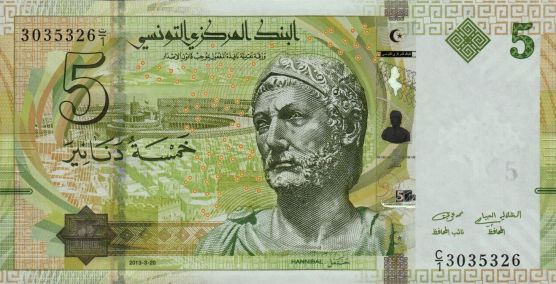
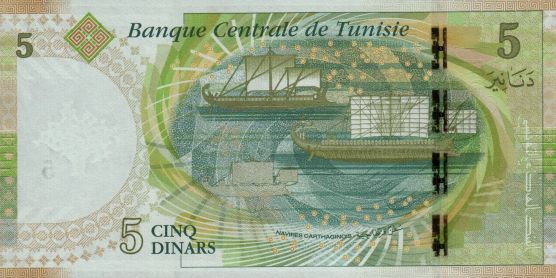
 What was already
What was already 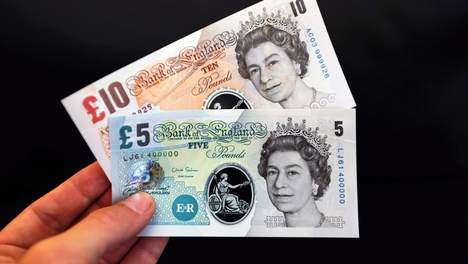
 Just recently the
Just recently the  Israel is preparing for the introduction of the first two banknotes of the new series: the 50 and 200 NIS (new Israeli shekel). The new series was
Israel is preparing for the introduction of the first two banknotes of the new series: the 50 and 200 NIS (new Israeli shekel). The new series was 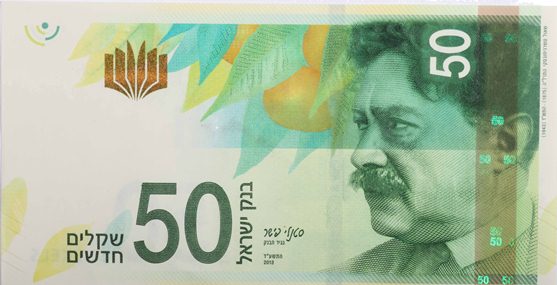
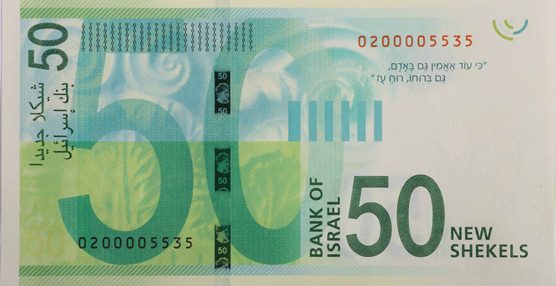
 The
The 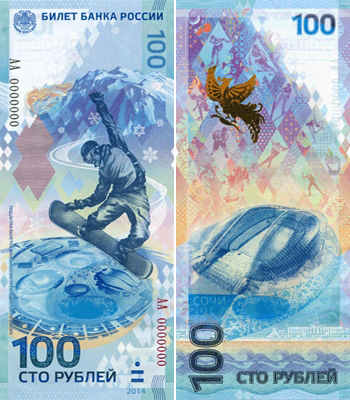
 The BBC
The BBC 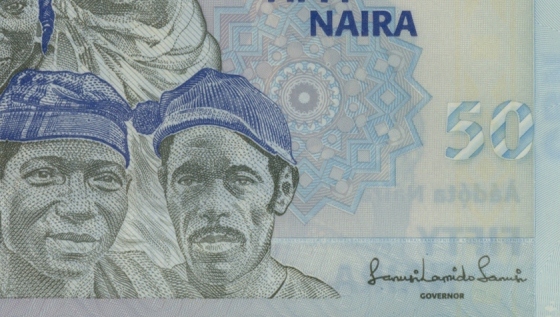
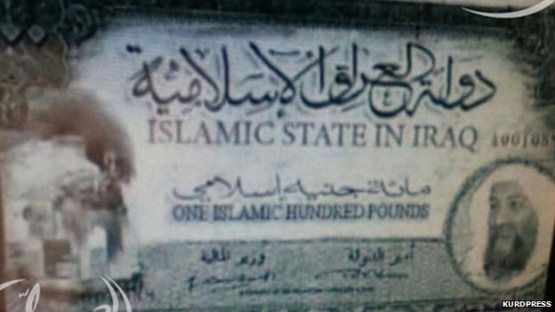
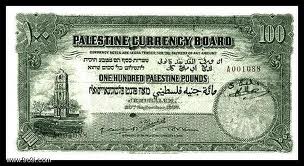
 The Guardian
The Guardian 
 The central bank of Morocco,
The central bank of Morocco, 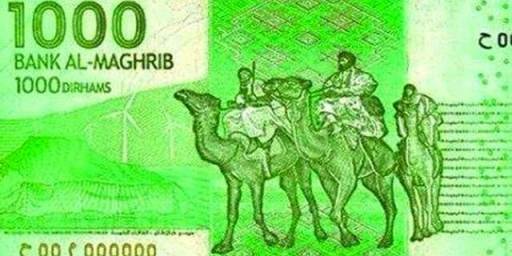
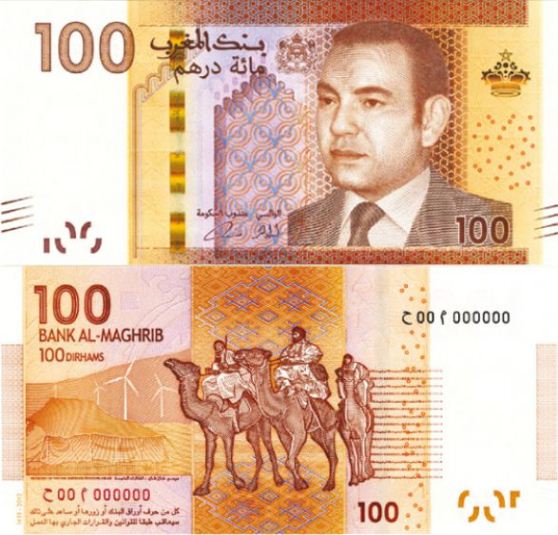
 According to a
According to a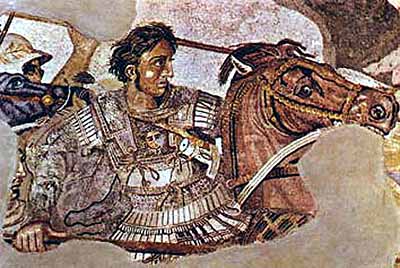


 The French Pacific Territories issue their new series of banknotes today. The beautiful old banknotes which were first issued in 1969 will circulate side by side with the new notes until 30 september 2014. From 1 October 2014 only the new banknotes will be legal tender. Read more on this new series in
The French Pacific Territories issue their new series of banknotes today. The beautiful old banknotes which were first issued in 1969 will circulate side by side with the new notes until 30 september 2014. From 1 October 2014 only the new banknotes will be legal tender. Read more on this new series in 
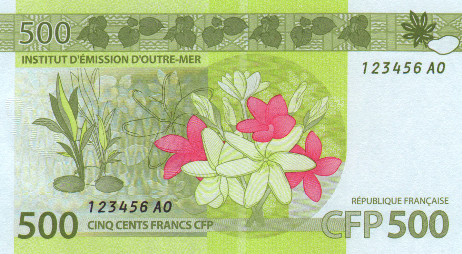
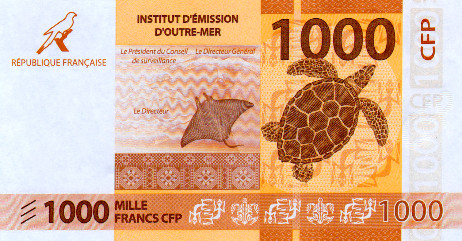
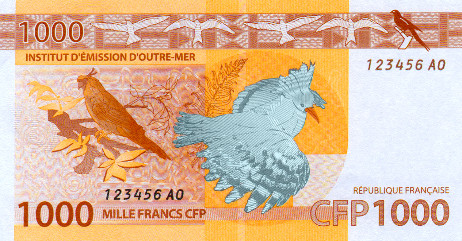
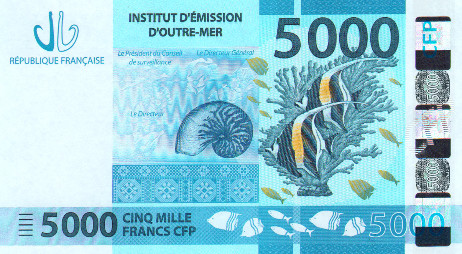
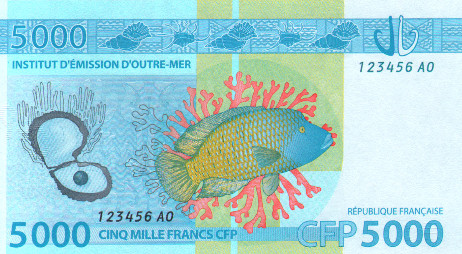
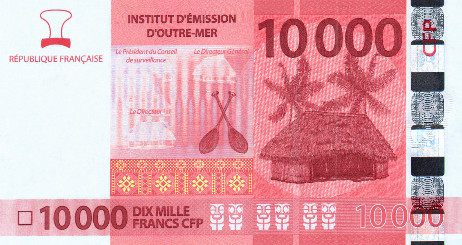
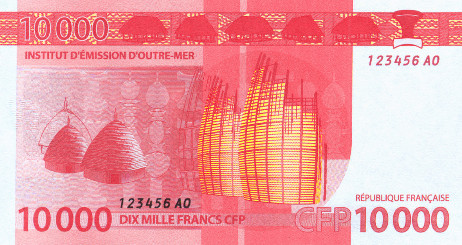
 The
The 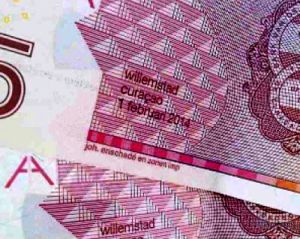
 From today on the old lats are no longer valid in Latvia. The only legal tender now is the euro. On 1 January the euro was
From today on the old lats are no longer valid in Latvia. The only legal tender now is the euro. On 1 January the euro was 








